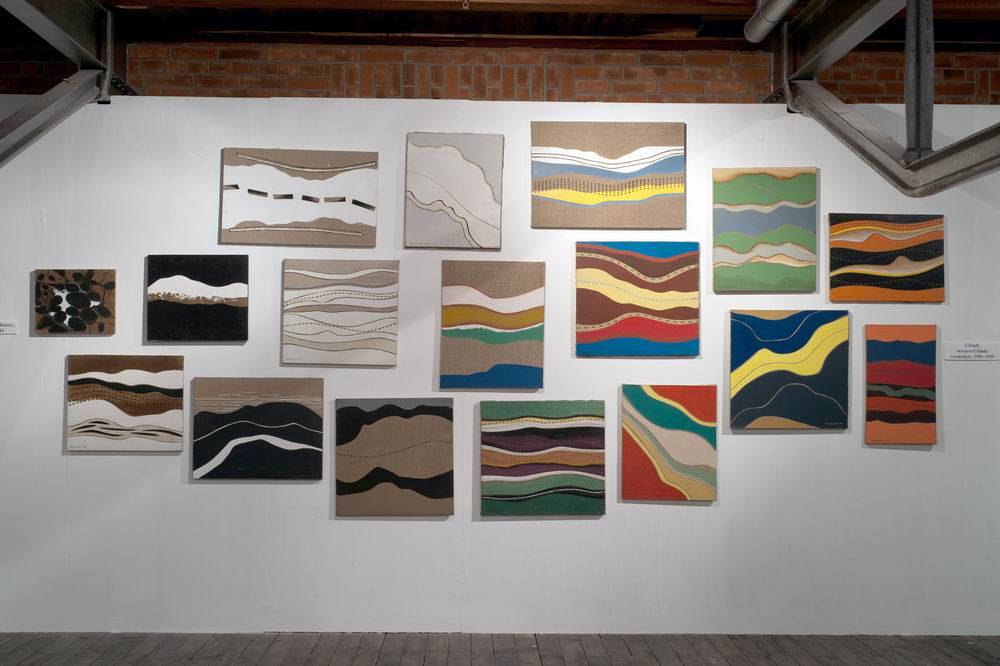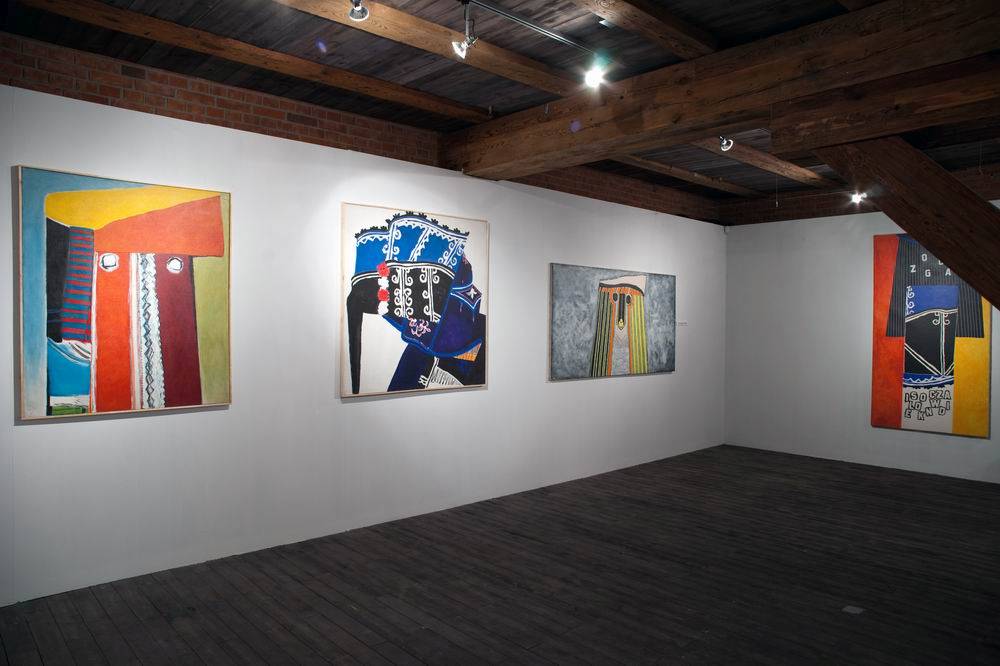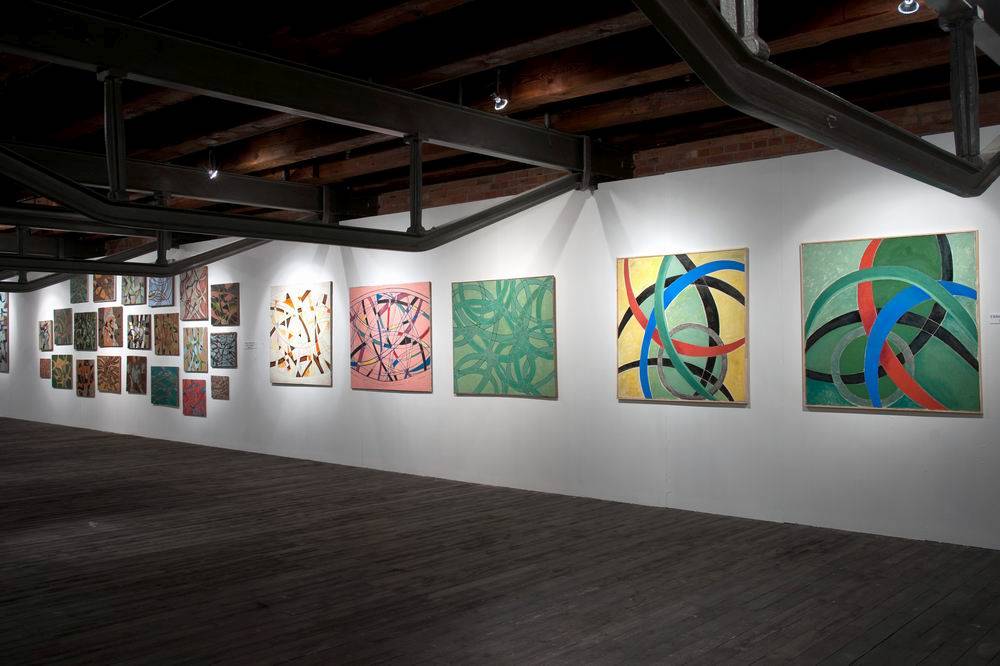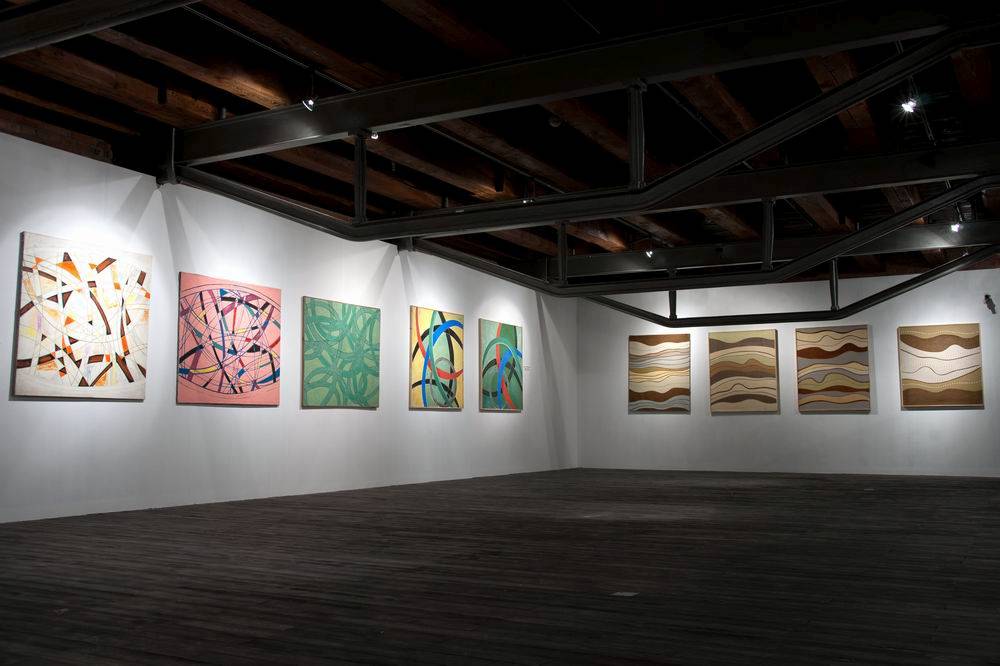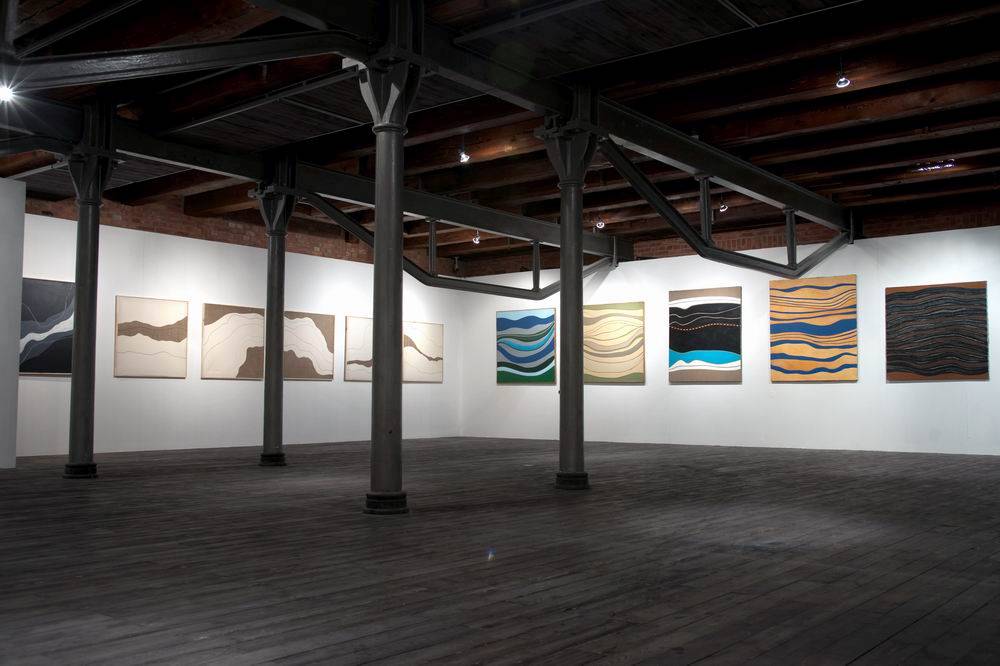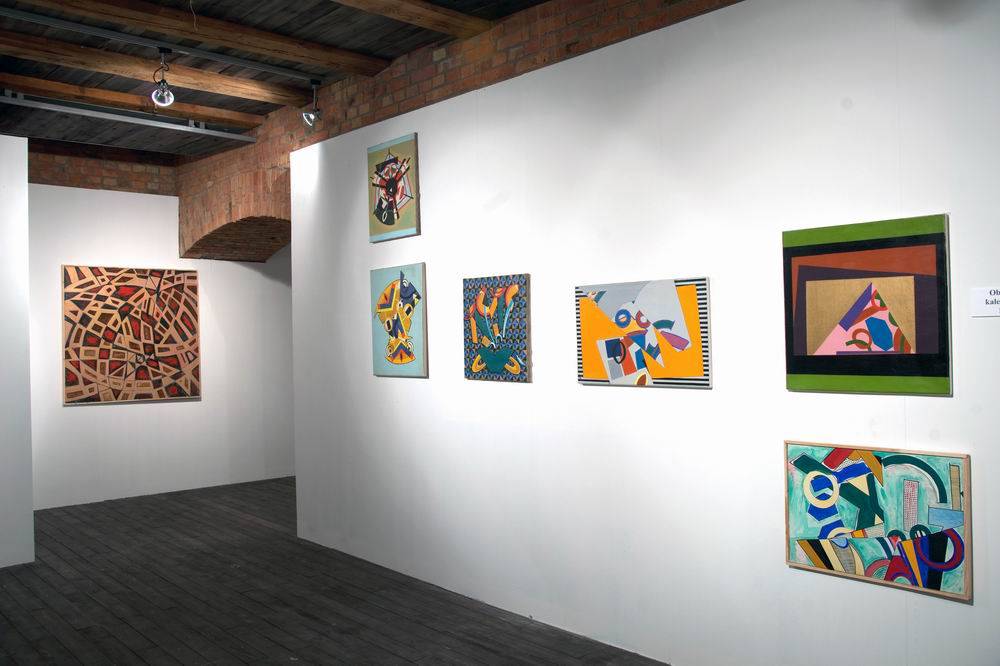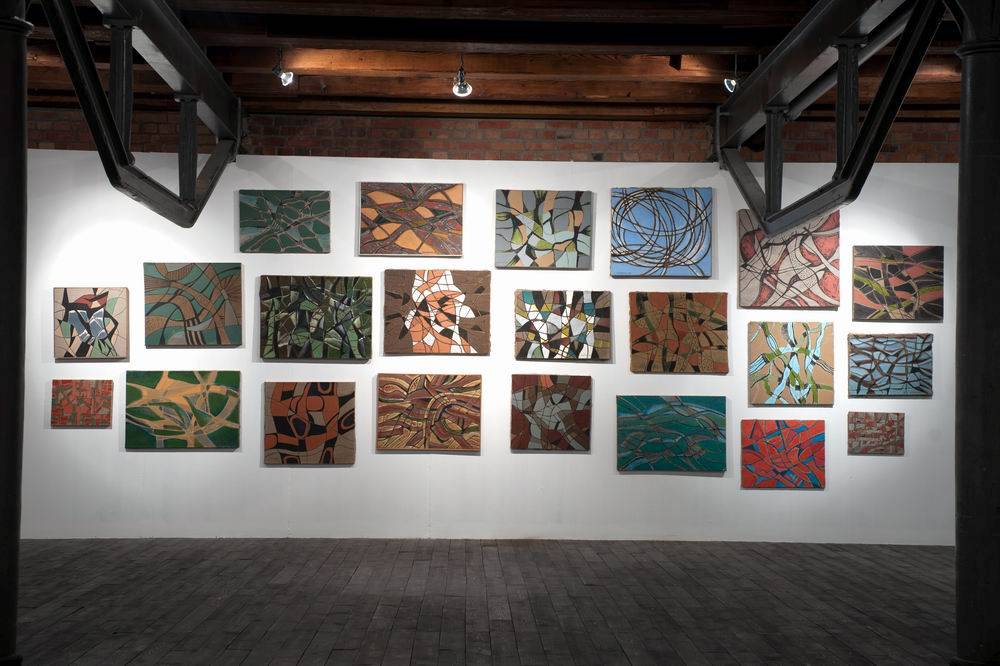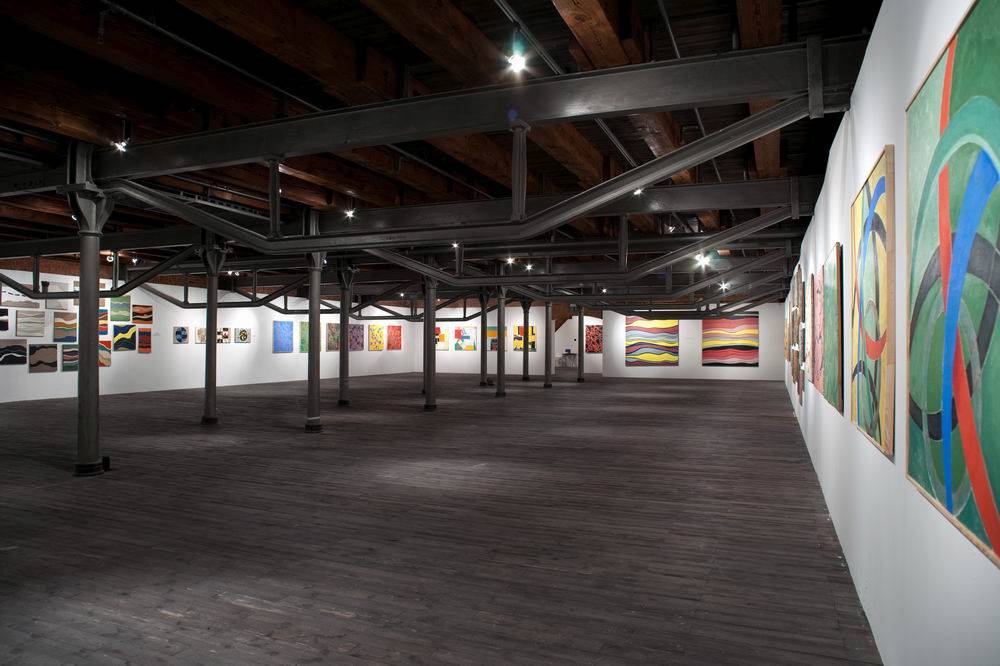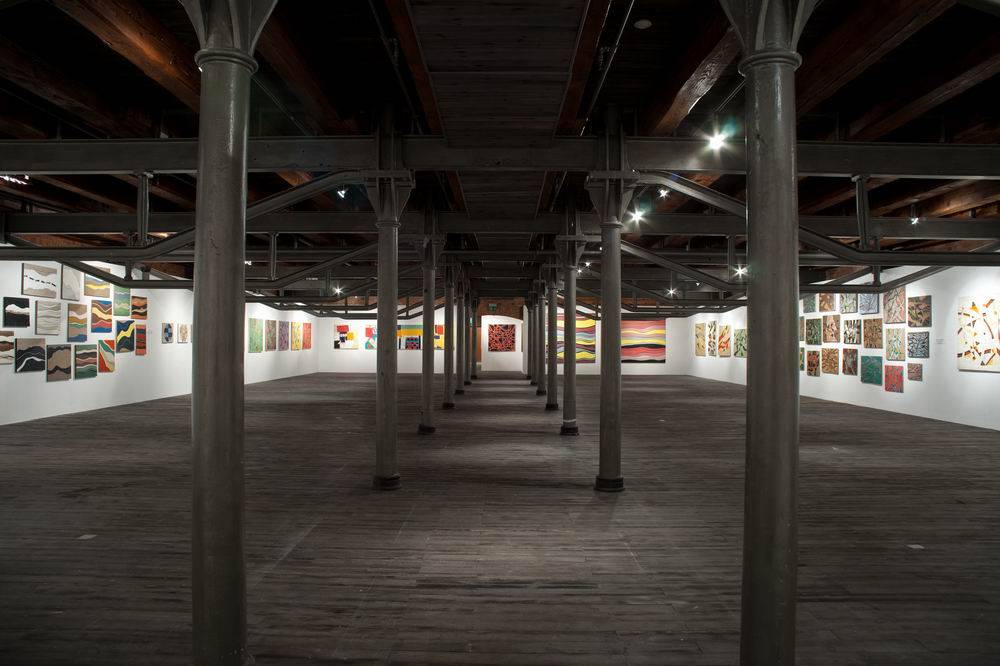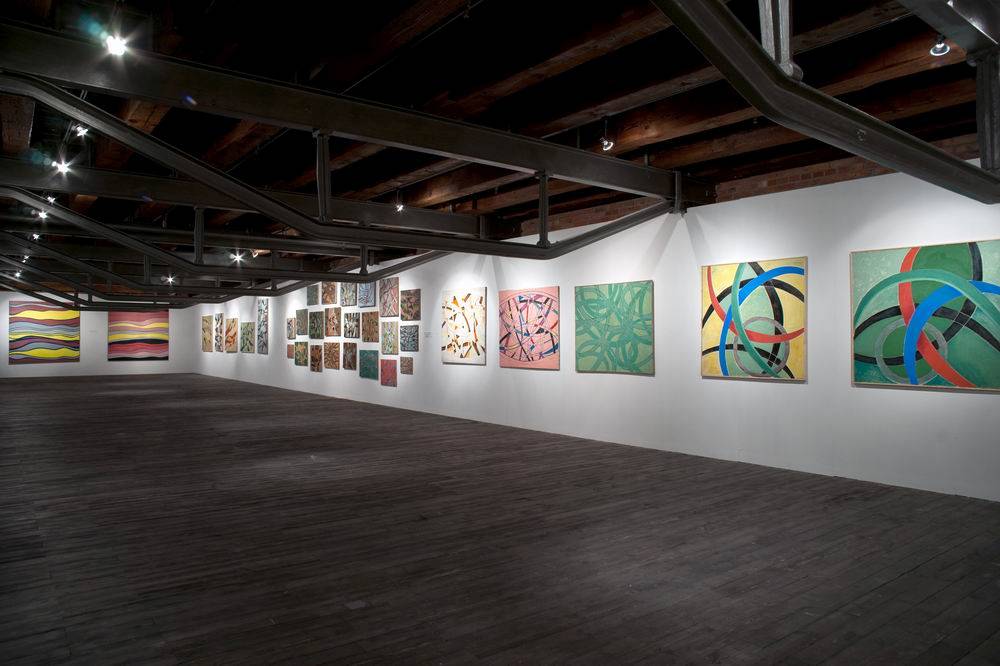Following the tradition of past years, after a series of retrospective exhibitions devoted to the work of eminent Poznan-based artists (the Lenicas, 2002; Jan Berdyszak, 2006; Prof. Andrzej Kurzawski, on the 80th anniversary of his birth, 2008), in 2009 the City Gallery Arsenal organized the Commemorative Festival in celebration of the 100th anniversary of Tadeusz Kalinowski’s birth. This large-scale exhibition opened with a presentation in the National Museum, showing the artist’s early work, from the time when he was associated with the artistic group 4F+R (the second half of the 1940s) and some 60 paintings that he created at the turn of the 1960s and 1970s, and which represent so-called “hard abstraction”.
Another part of the exhibition, which was presented in the Arsenal Gallery, was built around paintings marked by influences of Tashism and Zonism, as well as abstract linocuts (from 1957-66), shown next to some later works from the “kaleidoscope period”, and a selection of so-called “closed and open compositions”. The Ego Gallery showed a series of paintings with letters (from 1976/77), while the exhibition in Art Stations Foundation concentrated on the last two decades of the artist’s oeuvre, showing around 40 pieces from this period. On exhibit were kaleidoscope paintings (1976/80) and closed and open compositions. In total, the four-part exhibition included around 220 works selected by the curatorial team from the oeuvre of over 1000 art works. Tadeusz Kalinowski was the most important Poznan-based abstract painter. He devoted all of his work to abstractionism and remained faithful to this style until his death in 1957, that is, for 40 years. During the communist period, when the local artistic circles were dominated by artists practicing post-colorism and realism, Kalinowski was continually being pushed out of gallery exhibitions’ repertoire. He didn’t give in to pressures dictated by political or artistic hierarchies and, as one of very few artists of the day, stayed faithful to abstractionism. Such strength of will deserves admiration. The four-part exhibition was accompanied by a 250-page catalog, with photographs chosen and texts edited by Wojciech Makowiecki (the exhibition general curator) and Mirosław Pawłowski. It included as many as 250 color reproductions, a selection of excerpts and critical texts taken from catalogs published in conjunction with the artist’s previous individual exhibitions (A. Radajewski, W. Nowaczyk, A. Zielińska), two introductory essays (by A. Kostołowski and M. Niemyjska), as well as a current events calendar and a full list of solo and group exhibitions.
